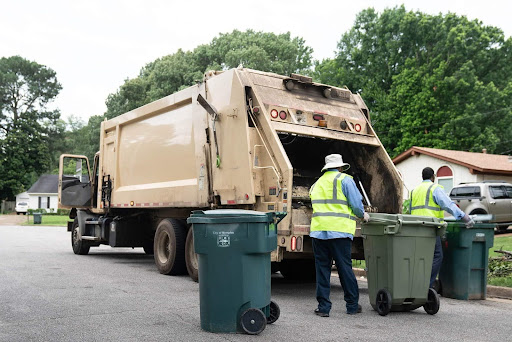Adopt simple, doable actions to cut waste, fight pollution, and build a sustainable future to have a long-lasting effect on the environment. You may contribute to the answer, but the Earth is at a turning point. Did you realise that plastic may surpass fish in our waters by 2050? Or that the amount of greenhouse gas emissions from food waste is higher than in most nations? These startling data serve as a reminder of the need for immediate action, but they also demonstrate the impact of modest, deliberate improvements. For homeowners and companies in the neighbourhood, our skip hire Aughton service provides dependable, reasonably priced, and practical garbage disposal solutions.
Contents
- 1 Cut Down On Single-Use Polymers
- 2 Burning
- 3 Reusing
- 4 Purchasing Goods With Minimal Packaging
- 5 Making Use Of Reusable Containers And Bags
- 6 A Comprehensive Investment In Better Communities And The Environment
- 7 Reject Fast Fashion By Saying “Not So Fast”
- 8 Clean Landfill
- 9 Encourage Leaders To Perform Better
- 10 Final Words
Cut Down On Single-Use Polymers
Microplastics pose a threat to both human health and the environment, and plastic manufacturing is a major and increasing contributor to climate change. However, because so many necessities are made of this difficult-to-recycle material, what are we to do? First, don’t give up; then, join TNC alongside other groups in urging global leaders to provide consumers with alternatives to the plastics business.
Burning
One way to dispose of waste is by incineration, which converts waste into its parts. This process produces ash and gases as byproducts. The type of waste that was burned and the kind of incinerator ultimately utilised determine the degree of pollution that results. Waste may be reduced by about 90% by incineration, which is also reasonably priced. Furthermore, the resulting ash is nutrient-rich and can be utilised to support hydroponic solutions. Toxic waste can be effectively removed with this trash disposal technique. If that wasn’t enough, the generated energy can be used to power turbines in addition to heating and cooking.
Reusing
Recycling is fantastic because it uses the power of industrial processes to transform garbage into a new kind of useful product. Paper, plastic, glass, and aluminium are among the materials that are frequently recycled. Reusing waste rather than disposing of it in landfills is beneficial to the planet’s health. The costlier processing processes are the only disadvantage.
Purchasing Goods With Minimal Packaging
- Waste is decreased by selecting goods with little to no recyclable packaging or none at all.
- Every year, enough disposable plastic and paper cups, forks, and spoons are thrown away to fill 300 laps around the centre of the globe.
Making Use Of Reusable Containers And Bags
- Reusable containers, bottles, and bags reduce the waste from single-use packaging.
- Only 25% of the 35 billion beverage bottles made of plastic that are thrown away annually in the US are recycled.
A Comprehensive Investment In Better Communities And The Environment
Organic waste collection, along with disposal, is still uncommon worldwide, despite the obvious potential. The majority of waste disposal financing is allocated to mixed trash collection and landfilling in the developing nations of the world, since the negative effects of uncontrolled organic waste are most severe. The issue is that collecting and treating separated organic waste is more difficult to perform, and there isn’t now a clear financial incentive to do so.
Reject Fast Fashion By Saying “Not So Fast”
The concept of fast fashion presupposes quick production of clothes, consumes a large amount of natural sources, and often involves the usage of synthetic materials which release microplastic, e.g., polyester. These dangerous microplastics harm the ecology seriously and cannot be observed by people. The microfibers and polymers are produced during the clothes manufacturing process, and the estimates foresee a threefold increase by 2050 in the textile production. Also, fast fashion promotes the culture of disposing rapidly by discarding clothing after several uses, which generates much textile waste. The used clothes accumulate in the landfills in millions of tons, and it requires thousands of years to decay, emitting chemicals and harmful green house gases.
Clean Landfill
Waste is disposed of using this method by being dumped in a landfill. The protective covering that surrounds landfills acts as a barrier between the groundwater and the dump, keeping pollutants out of the water. Layers of waste are compressed and covered with an earthy coating. Non-porous soil will suit this layer well as non-porous soil will minimize the chances of accidental spillage of hazardous substances. The landfills should be constructed away in flood prone areas and in areas where ground water levels are low. Be reminded that these dumps may be quite labour-consuming and under constant need of workers.
Encourage Leaders To Perform Better
Encouraging accountability and creativity, pushing leaders to enhance their waste management strategy, can have a big impact. Leaders are more willing to invest in environmentally friendly developments and enact efficient policies when they are pressured to establish higher standards. We can promote systemic reforms that result in better resource usage, lower pollution, and therefore a healthier planet for future generations by holding leaders accountable.
Final Words
With more solid markets for the byproducts of organic material treatment and a more supportive governmental environment, it is evident how much more could be accomplished. Given the current worldwide focus on reducing methane emissions and the pressing need to address the negative effects caused by waste pollution in communities that are already at risk, methods to handle organic waste merit careful consideration and decisive action.
